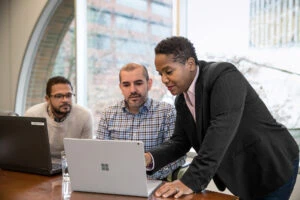
Empowering Inclusive Education
Microsoft was founded on the principle that people can do remarkable things when technology is within reach. Accessible technologies don’t just benefit people with disabilities. Whether it’s the hands-free voice commands you use for your phone every day or zoom features, it’s clear that we can help drive a more equitable education experience by creating and building technologies that work well for all students regardless of their abilities.
Educators today are faced with the challenge of integrating technology into the classroom and teaching students of all learning styles and abilities, including students with accessibility needs. As overall student usage of computers continues to rise, there is greater demand to provide assistive technology solutions to ensure all students have equal access to educational opportunities.
As Dr. Gordon Porter, the Director of Inclusive Education Canada stated in the recent release, “by giving teachers, administrators, parents, and students the knowledge and skills they need to make education equitable, we are creating stronger, more inclusive classrooms for everyone”
National Inclusive Education Month takes place across Canada starting now through to April. Microsoft has partnered with Inclusive Education Canada to provide free professional development workshops and resources for educators to ensure they have the right tools to help provide the most effective learning experience for students. They will learn how built-in accessibility features in Windows 10 and One Note learning tools in Office 365 on Surface Pro 4 devices can give teachers the opportunity to personalize student learning.
At Microsoft, we embrace our role in helping ensure students of all abilities have the opportunity to learn. We support the inclusive learning vision by designing technology that is accessible to every student—regardless of learning style.
Visit Microsoft.ca/inclusive to learn about how teachers can leverage technology to individualize student learning and accommodate student needs related to hearing, vision, language, and mobility/dexterity.





